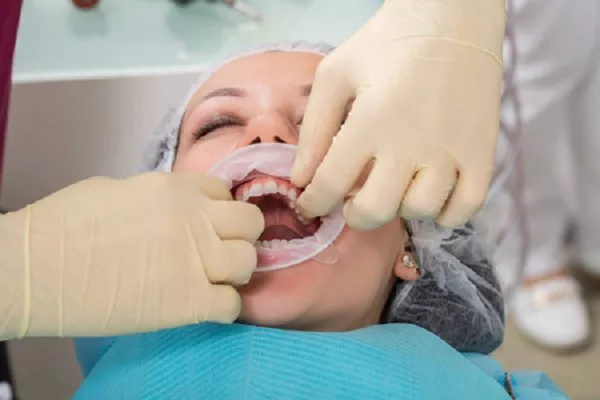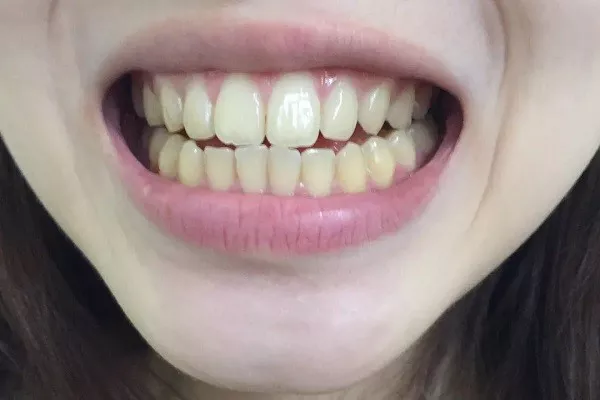Orthodontic expanders, also known as palatal expanders, are devices used to create more space in the upper jaw. They are commonly prescribed by orthodontists to address issues such as crowding, crossbites, and other alignment problems. While expanders play a crucial role in achieving a properly aligned bite and a straight smile, some patients may experience discomfort, particularly when eating. This article aims to explain why expanders can cause discomfort during meals and provides valuable insights into managing this discomfort for a smoother orthodontic experience.
What is a dental expander
A dental expander (also known as a jaw expander or palate expander) is an instrument used by a dentist or orthodontist to expand the space in the upper jaw. They are used to correct problems such as misaligned teeth and cross bites. The main function of dental expanders is to gradually increase the width of the palate by applying gradual light pressure on the palate to create expansion in the palate to provide more space for the teeth.
Dental expanders usually consist of a metal bracket and a central screw. The screws can be adjusted by the orthodontist. By turning the screw, the Dental Expander gradually creates a separation between the bones of the palate, which encourages the formation of new bone tissue and thus the expansion of the palate.
The use of dental expanders can help with a variety of dental and jaw problems, including:
Crowded teeth: Dental expanders create more space so that the teeth can line up better in the jawbone.
Crossbites: For patients with crossbites, dental expanders can correct the abnormal bite between the upper and lower jaws.
Jaw Asymmetry: Dental expanders can be used to adjust the shape and width of the upper jaw to improve jaw asymmetry.
Deformed palate: For some patients with a deformed palate, dental expanders can help restore normal jaw structure.
Patients may experience some discomfort and an adaptation period when using dental expanders. When first applying or adjusting, you may experience a slight discomfort or pressure, especially when eating. However, the adaptation period usually eases over time and the patient becomes more comfortable.
A dentist or orthodontist will develop an appropriate treatment plan for each individual case and provide guidance to ensure the effective use of dental expanders and optimal orthodontic results.
The Mechanics of Orthodontic Expanders
Orthodontic expanders work by applying gentle pressure on the upper jaw’s palate, gradually widening it over time. The device consists of a metal framework with a central screw that can be adjusted by the orthodontist. By turning the screw, the expander creates incremental separation between the bones of the palate, allowing new bone to form and thus expanding the upper jaw.
Why Does Eating Cause Discomfort?
Initial Adjustment Period: When the expander is first activated or adjusted, it’s common to experience discomfort. The pressure exerted on the palate, combined with the sensation of the expanding process, can lead to soreness and sensitivity.
Pressure Points: As the expander widens the upper jaw, it may create pressure points on the palate where it makes contact. When you eat, certain foods might push against these pressure points, causing additional discomfort.
Soft Tissue Sensitivity: The expansion process can also affect the surrounding soft tissues in the mouth, including the cheeks and tongue. Certain foods with textures that rub against these sensitive areas may cause discomfort while eating.
Managing Discomfort While Eating
Soft Diet: During the initial adjustment period, opt for soft foods that require minimal chewing. Soups, yogurt, mashed potatoes, and smoothies are good choices that reduce the stress on your palate.
Cut Food into Smaller Pieces: To avoid putting excessive pressure on the palate, cut your food into smaller, bite-sized pieces. This can help prevent discomfort while chewing.
Avoid Hard and Sticky Foods: Foods that are hard or sticky can be particularly challenging to chew and may exacerbate discomfort. Avoid items like nuts, hard candies, and chewing gum.
Chew on the Sides: When eating, try to chew on the sides of your mouth that are not in direct contact with the expander. This can help reduce the pressure on sensitive areas.
Rinse with Warm Salt Water: Gargling with warm salt water can provide relief and promote healing of any minor sores or irritations caused by the expander.
Over-the-Counter Pain Relief: If discomfort persists, consult your orthodontist about using over-the-counter pain relief options. Always follow their recommendations and guidelines.
Communicate with Your Orthodontist
It’s important to maintain open communication with your orthodontist throughout your treatment. If the discomfort while eating becomes unbearable or persists for an extended period, consult your orthodontist. They can assess the expander’s fit and make necessary adjustments to alleviate the discomfort.
How to Care for Your Dental Expander
Follow your doctor’s instructions: Follow the advice and directions of your dentist or orthodontist closely. They will show you how to properly fit, adjust and maintain your dental expander.
Regular Cleaning: Dental expanders should be cleaned regularly to prevent bacterial growth. Gently wash the dilator with warm water and mild soap, avoiding harsh chemicals.
Avoid certain foods: Try to avoid hard, sticky, or difficult-to-chew foods that can damage or cause discomfort to the dilator.
Adjusting the expander: If your dentist or orthodontist instructs you to adjust the expander, make sure to follow their instructions to avoid over-adjusting.
Avoid Collisions: Avoid collisions with hard objects or other objects to prevent damage to the dilator.
Maintain good oral hygiene: It is very important to maintain good oral hygiene habits. Regular brushing, flossing, and regular visits to your dentist can help prevent cavities and other oral problems.
Be aware of pain or discomfort: If you experience severe pain, discomfort, or notice anything unusual with the dilator, you should contact your dentist or orthodontist immediately for professional help.
Proper storage: When you are not wearing your dental expander, store it properly in the special expander case to avoid loss or damage.
Regular inspection: Regular inspection to ensure the normal working condition of the dilator, if there is any problem, please contact a professional doctor in time.
Follow your appointments: See your dentist or orthodontist regularly for expander maintenance and adjustments as recommended by them.
Conclusion
Experiencing discomfort while eating with an expander is not uncommon, especially during the initial adjustment phase. Understanding the mechanics behind the discomfort and following strategies to manage it can make your orthodontic journey more manageable. Remember that the discomfort is often temporary and will diminish as your mouth adapts to the expander. By maintaining good oral hygiene, following your orthodontist’s instructions, and practicing patience, you’ll be one step closer to achieving a beautifully aligned smile and improved oral health.
Related Topics:































